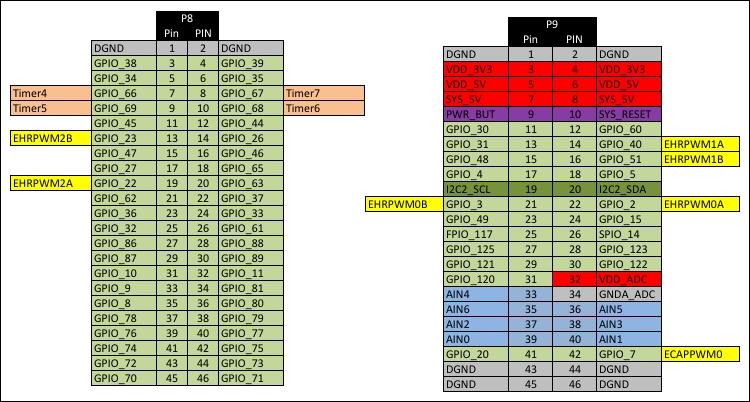BeagleBone Black's expansion headers
The BeagleBone Black comes with two expansion headers labeled P8 and P9. These expansion headers are used to connect external devices and sensors to the BeagleBone Black. These devices and sensors can be items such as temperature sensors to read the current temperature, motors to move a robot around the room or a GPS sensor that will tell the computer where it is in the world. With these external devices, we can interact with or monitor the outside world.
The expansion headers proved a wealth of I/O capabilities. The different pins on the expansion headers provide different types of I/O. In this introductory chapter, we will be focusing on the digital GPIO and analog pins. We will also see how the expansion headers can provide power and ground for the external devices.
The following charts show the various pins and the functionality they provide:

The pins with the light green background are General Purpose Input Output (GPIO) that function as the digital...



































































